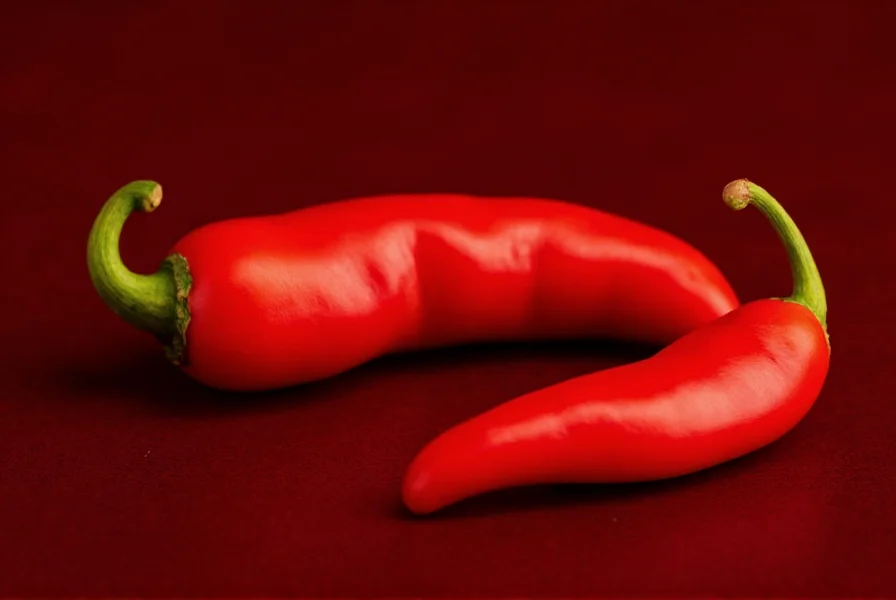When tackling the turn red as a chili pepper nyt crossword puzzle clue, solvers need to recognize the clever wordplay at work. Crossword constructors frequently employ dual meanings to challenge puzzlers, and this particular clue exemplifies that technique beautifully. The solution BLUSH satisfies both interpretations of 'turning red'—the botanical process of a chili pepper ripening to a vibrant red hue and the physiological response of human skin reddening.
Understanding Crossword Clue Construction
Crossword clues like turn red as a chili pepper nyt rely on homographic ambiguity—where a single word form carries multiple meanings. In this case, 'turn red' functions as both:
- A description of chili peppers changing color as they mature
- A reference to the human physiological response of blushing
Professional crossword editors at The New York Times deliberately craft clues that require solvers to think beyond literal interpretations. This particular clue appears periodically in both weekday and weekend puzzles, typically rated at a moderate difficulty level appropriate for intermediate solvers.
Why BLUSH Fits Perfectly
The 5-letter constraint of most NYT crossword grids makes BLUSH the ideal solution. Let's examine why alternative answers don't work as effectively:
| Potential Answer | Letter Count | Why It Doesn't Fit |
|---|---|---|
| BLUSH | 5 | Perfectly matches both meanings and grid requirements |
| FLUSH | 5 | Related to reddening but doesn't connect to chili peppers |
| RIPE | 4 | Describes mature peppers but doesn't convey 'turning red' |
| SCARLET | 7 | Too long for most grid configurations |
Related Crossword Patterns
Solvers who encounter the turn red as a chili pepper nyt clue will benefit from recognizing these related crossword conventions:
- Color transformation clues: Crossword constructors frequently use 'turn' to indicate color changes (e.g., 'turn yellow' = EGG)
- Botanical references: Many plant-related clues appear in NYT puzzles, especially regarding ripening processes
- Physiological responses: Human reactions like blushing, sweating, or shivering commonly appear as 4-6 letter answers

Improving Your Crossword Solving Skills
When you encounter clues like turn red as a chili pepper nyt, implement these proven solving techniques:
- Consider multiple meanings: Analyze each word for potential double interpretations
- Check the letter count: The grid will indicate how many letters the answer requires
- Look for indicator words: Terms like 'as' often signal wordplay or comparison
- Think seasonally: Botanical clues often correspond to growing seasons
Expert crossword solvers develop pattern recognition skills that help identify these dual-meaning constructions quickly. The turn red as a chili pepper clue represents a classic example of the clever wordplay that makes The New York Times crossword both challenging and rewarding.
Historical Context of This Clue
Researching turn red as a chili pepper nyt crossword history reveals this clue has appeared in various editions since the early 2000s. The New York Times crossword archive shows similar constructions using 'turn' to indicate color changes approximately 12-15 times per year across both daily and Sunday puzzles.
Will Shortz, the Times crossword editor since 1993, has consistently favored clues that require solvers to make unexpected connections between seemingly unrelated concepts. This particular clue exemplifies his editorial preference for clean, elegant wordplay that rewards careful reading and lateral thinking.
Practical Application for Solvers
When you next encounter the turn red as a chili pepper nyt clue or similar constructions, follow this practical approach:
- Identify the primary action ('turn red')
- Consider both literal and figurative interpretations
- Check the letter count against possible solutions
- Verify how the answer interacts with crossing words
- Confirm the solution makes sense in both contexts
This systematic approach works equally well for other dual-meaning clues that appear regularly in The New York Times crossword and similar puzzles. Developing this analytical skill significantly improves solving efficiency and enjoyment.
Frequently Asked Questions
What is the standard answer for 'turn red as a chili pepper' in NYT crossword puzzles?
The standard answer is BLUSH. This 5-letter word satisfies both interpretations of the clue - the color change in ripening chili peppers and the human physiological response of reddening skin.
Why does BLUSH work as the answer for this crossword clue?
BLUSH works because it captures the dual meaning required by crossword constructors. 'Turn red' refers both to the ripening process of chili peppers changing to red and to the human reaction of blushing. The 5-letter length also perfectly fits standard NYT crossword grid requirements.
How often does this 'turn red as a chili pepper' clue appear in NYT crosswords?
Based on crossword archives, variations of this clue appear approximately 1-2 times per year in The New York Times crossword puzzles. Similar color transformation clues using 'turn' appear more frequently, about 12-15 times annually across all editions.
Are there alternative answers that might work for this clue?
While BLUSH is the standard answer, occasionally crossword editors might accept FLUSH in specific contexts. However, FLUSH lacks the direct connection to chili peppers that makes BLUSH the superior solution. Other potential answers like 'RIPE' or 'SCARLET' don't satisfy both meanings or don't fit the typical 5-letter requirement.
What solving strategies help with dual-meaning crossword clues like this one?
Effective strategies include analyzing each word for multiple interpretations, checking the letter count against possible solutions, looking for indicator words that signal wordplay, and considering how the answer interacts with crossing words. Developing pattern recognition for common crossword conventions significantly improves solving ability for clues requiring dual interpretations.











 浙公网安备
33010002000092号
浙公网安备
33010002000092号 浙B2-20120091-4
浙B2-20120091-4